Pang and I started out - he was the leader and I the follower. To this day, I have no idea what streets we walked or which direction we took. I had said I like history and was interested in temples. That seemed to set the tone for the walk - he took me to different temples.
Anusawari Sam Kasat
One of the places we stopped was the Anusawari Sam Kasat - the Three Kings Monument. The monument, Pang told me is made of bronze and commemorates the alliance forged between the three northern Thai-Lao kings ~ Phaya Ngam Meuang of Phayao, Phaya Mengrai of Chiang Mai and Phaya Khun Ramkhamhaeng of Sukhothai and the founding of Chiang Mai. The statues seem to have become a sort of shrine for the locals who leave offerings of flowers, candles and incense at the feet on a regular basis in return for good luck/blessings from the powerful spirits of the three kings.
Unfortunately the photos I took weren't all that crash hot due to the light so they're not included here. But I have the memories here (taps head).
Ornamental Street Signs
Above: Street sign
The street signs in Chiang Mai are a real work of art and I couldn't help but think, "I wish we had signs like these at home". Given that Chiang Mai is noted for its many temples (over 300 of them), the obvious adornment for their street signs are temples and judging by this one, I'd say they try to fit as many as possible on top.
Thai Buddhist Temples
A Thai Buddhist temple is a group of religious buildings and other features (such as trees and lakes), surrounded by a wall, and with at least one gate. The main buildings are the Ubosot or Bot, (Ordination Hall), the Chedi or Stupa (Reliquary Tower) and the Viharn (teaching Hall). Of equal importance may be a Bhodi Tree or a Buddha Footprint.
Wat Duang Di (1829)
Wat Duang Di is in Phrapokklao Road and its name means "The Good Luck Monastery". It is a small temple almost hidden away in an area shaded by old longan trees. The viharn is remarkable for its highly decorated facade and the finely carved design over the main entrance and which shows certain central Thai influences such as the use of load-bearing walls.
Above: Facade of the viharn
Above: The carved 'sum' design over the entrance ~ comprises naga and plant motifs
Above: Main shrine
Above: The Ubosot
A phra ubosot (พระอุโบสถ) is the holiest prayer room and is also called the "ordination hall" as it is where ordinations take place.
Above: Detail of the richly carved front of the ubosot
Above: Marble tablet
The marble stone reads "The Chiang Mai chronicle reports that in 1761 a monk of Wat Duang Di became ruler of Chiang Mai at a time when Chiang Mai was independent for a short period before the Burmese returned to again govern the country (1763 - 1774).
In 1819 King Thammalangka, the second ruling prince of Chiang Mai, renovated the monastery and held a dedication celebration. Wat Duang Di has a wiham and monastic library with beautiful wood carvings."
Above: Guardian lion
Wat Umong Maha Therachan (1367)
Wat Umong Maha Therachan was built in 1367 during the reign of King Ku Na. The highly revered monk Thera Chan was the first abbot and it is said the King often visited the temple to seek his advice. The Wihan and the smaller bot are fine examples of the Lanna style.
Above: Wat Umongmaha Therachan
On Ratchpakinai Road, the charming temple is set amid a rustic tranquility full of pastoral charm. The grounds have a peaceful and relaxing feel and the variety of trees create a pleasant quietness.
Above: Close-up of the entrance
The rows of flags are comprised of the Thai flag (red, white and blue) and the yellow Thai Buddhist flag (The Dharmacakra flag), symbol of Buddhism in Thailand.
Above: Paying respect
Above: Buddha
I have had a great deal of trouble trying to find any history of this temple. If any of you reading this can add to this, please feel free to leave a comment and add to this. Thanks.
It's Friday
Above: Schoolgirls - Friday afternoon
These lovely girls caught my eye with their innocence and beauty. Pang tells me that on Fridays, school children wear pink to honour the King. In the past, most Thais would wear yellow in honour of HM, but after the PAD hijacked the colour yellow and politicised it, that seems to have changed.
What Wat?
Above: Golden Wat
Although the photo isn't the best, I really liked this lovely wat so have included it here. Alas, I've not been able to find out the name, but did wonder if it was Wat Phra Singh?
Wat Phra Sing ~ Monastery of the Lion Buddha (1345)
Wat Phra Sing was built in the 14th century by King Pha Yu of the Mengrai dynasty to enshrine the remains of his faher, King Kham Fu. Today, Wat Phra Sing houses Phra Chao Thong Tip, the most venerated Buddha statue in northern Thailand. It was cast in 1477 and is made of an alloy of gold and copper. The statue was a gift to Chao Kawila by several monks from Sipsongpanna (the southernmost area of today's Yunnan province, China).
King Ananda Mahidol (Rama VIII), the older brother of the present King Bhumibol Adulyadej (Rama IX), bestowed it the status of Royal temple of the first grade in 1935.
Above: Facade of Viharn Luang
Above: Inside the Ubosot of Wat Phra Singh
Perpendicular to Viharn Lai Kham is the ubosot, built in 1806. The opulent decoration on its gables include abstract mandala designs. Inside is an ornate ku (Buddha throne)
Above: Viharn Lai Kham - Hand-painted murals
The realistically painted murals on the walls document the daily life of the people of Lan Na in the 19th century. The viharn is also notable for its colorful mural paintings illustrating Jakata tales of the Buddha. The murals were painted during the 1820s by a Chinese artist.
Above: The much-revered Lion Buddha at Wat Phra Singh
During Songkran each year, the statue is taken from Wihan Lai Kham and carried through the streets of Chiang Mai in a religious procession during which the spectators honour the statue by sprinkling water over it. It is said the head is a copy as the original was said to be stolen in 1922. The beautiful Viharn Lai Kham (Gilded Hall), was built around 1345 and renovated in the early 19th century. It is considered a fine example of Lanna monastic architecture.
Wat Phan Tao (1846)
Wat Phan Tao means "The Monastery of a Thousand Kilns". The site was used for the casting of Buddha images intended for Wat Chedi Luang, which is adjacent to the monastery. The building wasn't originally constructed as a monastery, but as a royal palace building (ho kham) for the ruler of Chiang Mai, Chao Mahawong, who used the structure from 1846 to 1854. Originally it stood on stilts, but they were removed when the building was refurbished as a monastery in 1876.
Above: Peacock and dog motif over the main entrance
The dog is the zodiac symbol of Chao Mahawong's birth year. The dog image is also present in the pediment of the left window on the front facade, though it's absent on the right side.
Above: Peacock
A closer view of the peacock and curled dog design in the pediment. The dog (crouching below the peacock) represents the founder, Chao Mahawong, whose zodiac birth sign was the dog.
Above: Detail of the 'eyebrow' pelmet below the peacock and dog motif, showing lotus flowers in various stages of bloom
Time to go 'home'
By the time we had looked at these lovely temples, walked around in circles (remember I had no idea where I was, being a first timer and all) the light had been fading fast. Indeed, many of the photos I took don't do the temples justice - in daylight they would have come out so much better. We strolled back, went to the cafe and settled down for a drink and a chinwag.
So ended my first day in Chiang Mai.
Thailand Time
Click On Your Flag To Translate
Thailand and Laos (and Myanmar if I can manage it)
Hello, Sawatdee kaa and Sabai dee,
My next trip will be Thailand and Laos, and this is all about the before, the trip and the after - similar to my Malaysia/Cambodia blog. I am putting together from start to finish - tickets, do's and don'ts, tours, where to stay, places to see, things to do, as well as useful extras like transport, good places to eat, what to wear, climate, tourist traps, tricks and tips and whatever else I can think of that will be useful.
If you have any tips or advice, please, feel free to leave a comment and add your bit - whatever you think may be helpful or interesting.
Cheers.
My next trip will be Thailand and Laos, and this is all about the before, the trip and the after - similar to my Malaysia/Cambodia blog. I am putting together from start to finish - tickets, do's and don'ts, tours, where to stay, places to see, things to do, as well as useful extras like transport, good places to eat, what to wear, climate, tourist traps, tricks and tips and whatever else I can think of that will be useful.
If you have any tips or advice, please, feel free to leave a comment and add your bit - whatever you think may be helpful or interesting.
Cheers.
Thailand map
View Bangkok Thailand in a larger map
Playlist - My Travel Videos
Sunday, September 25, 2011
Subscribe to:
Post Comments (Atom)





































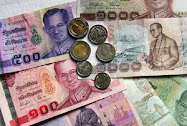











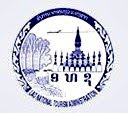
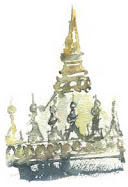
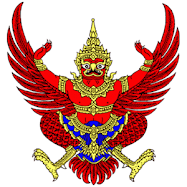
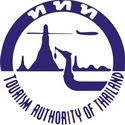




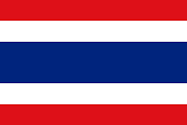


No comments:
Post a Comment